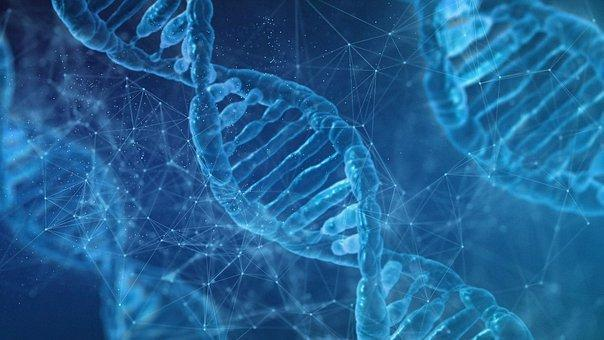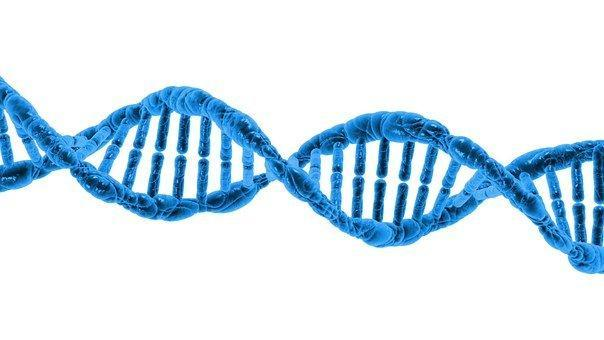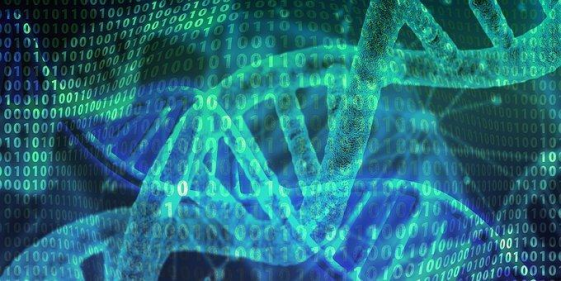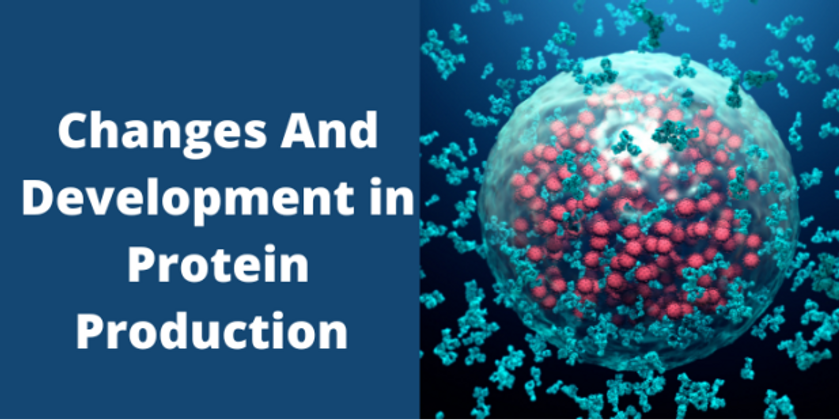Changes And Development in Protein Production
May 6th 2022
Therapeutic protein production with the latest technologies is crucial to help fight infectious diseases and diseases like cancer, which contribute primarily to deaths among humans globally. One of the essential needs of humankind includes producing therapeutic proteins for the treatment of conditions on a large scale.
There has been recent progress in the area of recombinant technologies of DNA. That has then paved the way for recombinant protein production, which could be utilized in vaccines, therapeutics, and diagnostic reagents. The recombinant proteins for these applications are produced mainly through e-coli expression systems, eukaryotic and prokaryotic expression host systems like bacteria, mammalian cells, insect cells, yeast, and transgenic plants in the large-scale and laboratory settings.
Today, the field of antibody production service through protein expression has experienced significant technological advancement making the process better. Processing and production of recombinant protein-based biopharmaceuticals are now high-yielding, cost-effective, and speedy in production. The technologies used are very innovative and include; single-use devices, high-throughput technologies, statistical optimization of the environmental and media parameters, PAT, QbD, and continuous upstream processing. They are discussed in detail below.
High-Throughput Cultivation Systems (HTPDs)

Image Source:
https://cdn.pixabay.com/photo/2022/03/25/12/17/dna-7090994__340.jpg
This is a growing field that started in the mid-'90s, together with the adoption of the 96-well microtiter plates. It has since had huge impacts and influence on custom antibody production research by screening libraries of many chemicals for the potential candidates for new drugs. The modern HTS systems were usually incorporated into liquid-handling systems of protein expression and purification services, allowing automation and massive increment in the throughput of steps performed traditionally by the trained laboratory technicians.
The strong advances in recent decades in biotechnology and pharmaceutical fields would not be possible if not for the massive samples' parallel process made possible by the high-throughput screening and cultivation systems. The modern ultra HTS can now work with up to 3456 wells a plate, volumes of the assay at the picoliter level, and the throughputs can go beyond 100,000 assays.
HTPDs were developed for upstream process development like mini-bioreactors and multi-well-plates. This technology has made it easier to perform all the screening experiments that include optimizing processes of protein expression services. Optimizing processes saves a lot of cost and time in protein purification services. Some examples of high-throughput systems include:
- Microtiter plates or miniature shaken wells/vessel
- Microplate-based
- Mini-bioreactors or bubble column
- Stirred mini-tanked bioreactors
Fed-batch and the batch optimization process have been developed and improved courtesy of HTPD. For successful continuous bioprocessing, process optimization for perfusion cell culture is required. Because of that, manufacturers and equipment developers are motivated to create suitable HTP perfusion micro bioreactors for the studies of perfusion process optimization. In standard 96-well-microtiter plates, cultivations represent the miniaturization's optical system. The microtiter plates were used successfully to develop recombinant.
A study characterized 32 production clones in the cultivation of carbon-limited micro bioreactors using the production yields of 0-7.4 mg Fab a gram of dry cell mass. An automated small-scale bioreactor's suitability as a small-scale model was confirmed with a perfusion process. Another study also reported that an automated microbioreactor system (ambr15) could be utilized in the scaling down of the perfusion process through the use of cell sedimentation. There was an observation that the model under-predicted the cell line productivity.
However, it accurately predicted the product quality attributes, including the glycosylation profiles. The microbioreactor system decreased culture media requirements by 80-fold and reduced the daily operator time by half. That resulted in a close to a 2.5-fold reduction of the cost compared to the same bench-scale setup of the experiment.
Single-Use Cultivation Technologies

Image Source:
https://cdn.pixabay.com/photo/2013/07/18/10/59/dna-163710__340.jpg
The world economy's current state has changed tremendously in a positive direction. As a result, manufacturers have moved away from equipment that needs sterilization or recycled consumables, which could be of great risk in their transfer into cleanrooms. The advancement in technology has instead led manufacturers towards adopting items that are singly used and disposable.
The processes of recycling involving re-sterilization and cleaning were expensive, time-consuming, energy-hungry, and demanded a large footprint while at the same time prone to frequent control breakdowns. Because of such problems, there was a need to develop a single-use systems and technologies paradigm. The single-use systems solve the issues and concerns surrounding costs, time, and non-sterility custom protein production. Therefore, it enables pharmaceutical organizations to shift away from the equipment that needs sterilization, recycling, and adapting single-use sterile items which are disposable. What are some of the single-use technologies? Single-use technologies include;
- Capsule filters
- Tubing
- Devices of ion exchange membrane chromatography
- Mixers
- Bioreactors
- Product-holding sterile bags
- Connection devices
- Sampling receptacles
Recently, there has been massive progress in single-use cultivation systems in single-use sensors or probes and fluidics components. That has led to massive development in upstream processing in protein synthesis and monoclonal antibody sequencing. The single-use upstream processing devices implementation has led to operating costs and less capital with a lot of flexibility.
A study was conducted on integrated continuous processing. It demonstrated that saving up to about 30 percent could be achieved through disposable technologies considering the stainless-steel batch process. There are different single-use disposable cultivation systems, including orbital shaken, wave, stirred tank, and pneumatically mixed bioreactors. These systems pose very low contamination risks because sterilization and cleaning are not required. It is also worth pointing out that a wave bioreactor has been developed. It consists of a Cellbag made from polymers put on a rocker unit equipped with DO, pH, pressure, and temperature controllers. This developed design improves the mixing of mass transfer and cultivation media.
The Approach to Design Experiments
The Design of Experiments approach was developed to minimize the experimental effort in developing the upstream process. It investigates various processes in producing recombinant proteins by gene synthesis companies. To enhance protein yield, the following statistical experiments that utilized different approaches of DoE were used; factorial design, complete factorial design, the response surface methodology, and the Taguchi orthogonal arrays. They were meant to enhance protein yield considering various components in media interacting with each other.
With the design of the experiment's approach, a variety of process parameters could be changed in experimental trials. Additionally, a few experiments are adequate for deciding the effect of different parameters and selecting the most important ones.
The approach to Quality by Design
There has also been a study on Quality by Design with the Design of Experiments or high-throughput devices to develop an upstream process. What is Quality by Design? This is a manufacturing principle with which the product quality in custom peptide synthesis is integrated into the manufacturing process. This method has been used to characterize recombinant proteins in custom gene synthesis and process development that includes mAbs.
The effect of process parameters in Fab production and various media components was studied using the Quality by Design approach. That resulted in a 5-fold target protein titer enhancement compared to the basal medium, demonstrating the efficacy of quality by design.
Process Analytical Technology for Upstream Process

Image Source: https://cdn.pixabay.com/photo/2019/09/15/12/05/dna-4478127__340.jpg
Effective process optimization needs the real-time monitoring of the different process parameters. What is Process Analytical Technology (PAT)in custom protein synthesis? This is the process in which you ensure that the final product quality meets specifications by analyzing, designing, and controlling manufacturing via continuous or periodic measurement of performance attributes and critical quality. Critical quality attributes are the properties that ensure the desired product quality by meeting the defined criteria.
The process parameters affecting the critical quality attributes are crucial. They should be controlled and observed to ensure the process leads to the desired quality. Innovation is needed in the sensor technology, its robustness, and configuration to ensure that the process analytical technology is implemented for continuous cultural advancement. There has been advanced development of analytical process tools for performance analysis of the cultures of perfusion bioreactors which has contributed to significant contributions in regulatory issues concerning protein manufacturing and antibody specificity.
Process Modeling
Because of a lack of full knowledge of reaction pathways and metabolic networks, setting up a universal mechanistic model to deal with mammalian cells is still a challenge. However, a solution of a hybrid semi-parametric model has emerged. It contains machine-learning and mechanistic methodologies as a potential bioprocess development tool. In a specific study, a mathematical model describing the production of poliovirus in batch bioreactors was formed and accurately described its production by Vero cells.
The combination of a parallel mini-bioreactor system for E.coli expression system screening and the mechanistic growth models was studied to choose the most robust strains using a scale-down approach for bioprocess scale-up. After studying a hybrid model using a 3.5 fed-batch process to produce therapeutic protein, it was found to possess a better capability for predicting the time evolution of different process variables than statistical models.
Additionally, a simple techno-economic model was studied for mAbs production, which could be used for any production platform. Other approaches to modeling for the optimization of bioprocesses have also been studied. A three-dimensional CFD model for hollow OSRs was formed and validated, thus verifying that the hollow cylinder wall could improve mixing efficiency.
The Process of Perfusion Culture
Developing continuous perfusion bioreactor cultures provides performance and cost benefits to peptide synthesis companies like Elisa Kit manufacturers. This process goes on for over one month and needs cell-line stability and an optimized process to produce the most significant amounts of proteins. The perfusion bioreactor cultivations have been used for cell stock preparations and seed bioreactors with a cell density of 1-2 * 10^8 cells/ml. A bleed port and a harvest port are fitted in a perfusion bioreactor to prevent the accumulation of toxic metabolites and gain cell density values that are more viable.
The novel cell retention technique types like the alternative tangential flow filtration have been established and used in the perfusion bioreactors to manufacture custom antibodies and recombinant protein, including spin filters and TFF, which are most commonly used.
Downstream Process Development
The downstream purification process is fundamental because it contributes to the approval of human therapeutic products like the best Elisa kits. Conventionally, recombinant protein production service involves the are generally purification of recombinant proteins through chromatography, centrifugation, and membrane filtration-based purification steps. Viral inactivation is also used for recombinant biopharmaceuticals that have been produced from mammalian cells.
Cell disruption is needed to recover the desired proteins expressed as intracellular IBs. The bead mills and the high-pressure homogenizers include the most commonly used cell disruption methods. The most commonly used cell harvesting, separation, and custom protein expression techniques include centrifugation, depth filtration, and tangential flow microfiltration. Refolding proteins is necessary for attaining the biological activity of the IB-expressed recombinant proteins. The solubilized IBs' batch mode refolding is conducted through pulse or rapid dilution through dialysis, diafiltration, and chromatography methods. A recent study established that mild solubilization could be considered in terms of time, cost, and tag-free nature to recover scFv from IBS.
Processes of Chromatography
Various techniques of chromatography in antibody sequencing services are used to purify the recombinant protein-based biopharmaceuticals to achieve high purity products having a biologically active form. The methods include; ion exchange, affinity, hydrophobic interaction, and gel filtration chromatography. In the upstream process, an increased product concentration causes a higher volume of chromatography resin, including a higher buffer requirement.
Final Thoughts
Recombinant therapeutic protein manufacturing is a costly, complex, and multidisciplinary process. There is a daily increase in the demand for recombinant proteins for human application. Additionally, there has also been a massive demand for improved and novel bioprocessing strategies which are time-saving and cost-effective. The continuous improvement of biopharmaceutical expression systems has made it possible to produce quality products. Modern molecular biology techniques are at the forefront of the production of biopharmaceutical proteins through the use of eukaryote or prokaryote systems.
Metabolic engineering, systems biology, and CRISPR/Cas systems are innovative techniques applied to strain engineering to improve bioprocess performance and generate biologically stable and active proteins. Glycoengineering strategies allow for the easy production of a therapeutic protein that enhances safety and biological activity. Single-use systems have been used increasingly in downstream and upstream process development, thus increasing the production rate and flexibility alongside cutting down on the capital cost and downtown. Despite the many developments in single-use systems and the integrated continuous biomanufacturing, various components require further action.

